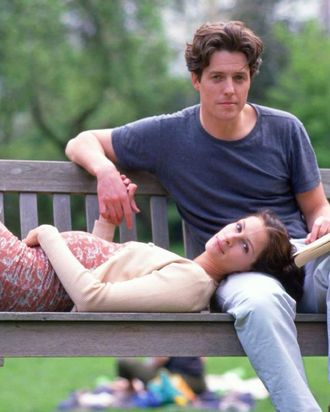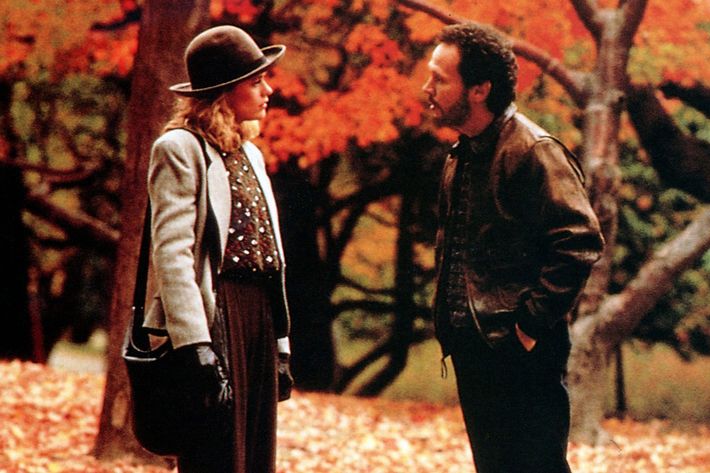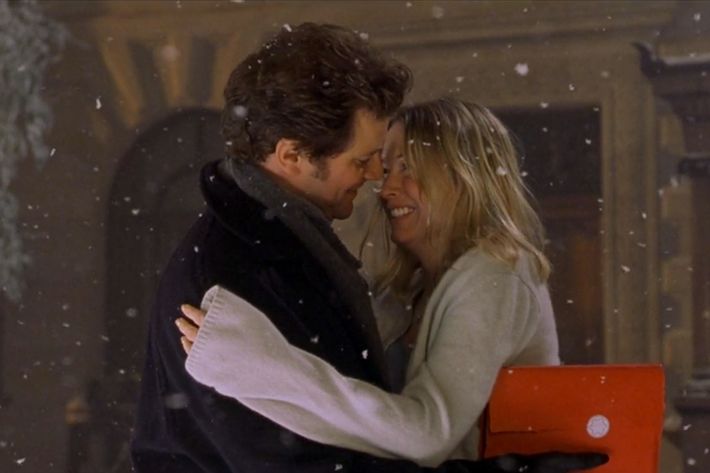
This week, four of our writers are participating in an extremely serious debate regarding which season is the best setting for a romantic comedy. Is it winter, when Nancy Meyers bundles all of her characters in adorable sweaters? Is it spring, when both the ice and Tom Hanks’s cold corporate heart start melting? Is it summer, when everyone is confused about whether to marry Julia Roberts or Cameron Diaz? Or is it fall, when Taylor Swift, who thinks she is in a rom-com, drinks maple lattes? Read on for Jen Chaney’s defense of spring.
Spring is famously known as the time when a young man’s (and woman’s) fancy turns to thoughts of love. It’s not surprising, then, that so many of the best and most beloved contemporary rom-coms are strongly associated with the season of renewal, rising temperatures, and cherry blossoms.
Broadcast News, one of the best and smartest romantic comedies of the past three decades — no wait, make that ever — unfolds largely during a Washington, D.C., spring, with its most romantic moment taking place during the White House Correspondents’ Dinner, an event traditionally held during that mild, pre-humidity season. Even though I know that Holly Hunter’s Jane Craig has no business getting romantically entangled with William Hurt’s too-smooth anchorman Tom Grunick, butterflies flitter through my chest every single time I watch Jane as she looks down on the nerd prom crowd, spots Tom, swears they are only meant to be together if he spots her, too, and then he does, clutching his heart as if Cupid’s arrow has just hit him right where all his blood pumps. May we all one day be looked at the way William Hurt looks at Holly Hunter when she’s wearing a super-’80s, strapless polka-dot dress.
Notting Hill — in which Julia Roberts and Hugh Grant, the two stars perhaps most responsible for keeping the genre alive in the ’90s and 2000s, fall in love — opens in the spring, when movie star Anna Scott (Roberts) and charming book-shop owner Will Thacker (Grant) first meet. When the two reconcile at film’s end, the calendar has again returned to that season, just in time for Anna to make a speech about being “just a girl, standing in front of a boy, asking him to love her.”
Nora Ephron’s You’ve Got Mail runs its romantic AOL-ian course during the fall, winter, and spring, but it’s in that last season that Meg Ryan — also a charming book-shop owner! — and Tom Hanks, who puts her book shop out of business, come to grips with the fact that they’ve fallen in love via what we now know is extremely primitive email. Their first kiss takes place while spring flowers in the 91st Street Garden bloom in full behind them. Technically, that kiss is not as satisfying as their meeting on top of the Empire State Building in Sleepless in Seattle, which is just a better movie even though it’s winter, through and through. But You’ve Got Mail still has its moments, and Mindy Kaling thinks it’s the ultimate rom-com, and that counts for something. Plus, all those flowers sure look pretty.
Speaking of polarizing movie opinions, this seems like the proper moment to acknowledge that the best, most romantic scenes in La La Land all take place during the movie’s spring section. Even if you are offended by its treatment of jazz or the snobbiness of Sebastian (Ryan Gosling) or the fact that it got so many Oscar nominations, it’s tough to deny the buoyant beauty of Gosling and Emma Stone, in a yellow dress that is basically springtime in musical rom-com costume form, tap dancing with the Hollywood hills all a-twinkle behind them. It’s also tough to deny the chemistry between them as they sing “City of Stars” and stare into each other’s eyes. And it’s really tough not to swoon a little when they soar into the air to join those stars during a planetarium date night, all of which happens before the movie’s “summer” title card appears.
But if for some reason all of that is not enough to convince you, let me say two words: teen movie. Now let me say one more word: prom.
Just about every teen movie that focuses on romance — and even some that don’t — features a scene at a prom or some other springtime dance. Many of us get our first taste of what rom-com feelings are supposed to feel like from watching these kinds of movies. As dismissed as they may often be by critics and academics, they imprint on us and they remain for-freaking-ever, informing our romantic fantasies as much and sometimes more than classics like Casablanca.
Certainly the Taming of the Shrew–inspired Ten Things I Hate About You imprinted on a lot of ’90s kids. It contains a pivotal prom scene, the fallout of which leads Julia Stiles to cry-read a poem and break our hearts while securing her place in Heath Ledger’s. She’s All That — another mainstream ’90s teen comedy based on a classic older work, this time, Pygmalion — is deeply immersed in prom season. Clueless, the ruler of all ’90s teen movies inspired by literature, doesn’t have a prom scene or a school dance, but Cher (Alicia Silverstone) has her “I’m in love with Josh” epiphany in what is definitely the spring. And even though the movie takes place in multiple seasons, isn’t there something youthful and fun and vibrant about it that just feels like spring?
Let’s not forget the teen movies in the ’80s that paved the way for those cinematic spring teen romances. The climactic scene in Valley Girl, when Deborah Foreman finally cements her relationship with the freak who completes her, played by Nicolas Cage? That happens at prom. And then there’s the Queen Mother of prom movies, Pretty in Pink, in which Molly Ringwald’s Andie and Andrew McCarthy’s Blaine fall in love in the weeks leading up to that right of pin-on-corsage passage, thereby giving us one of the most intense teen-movie kisses of all time. I was 13 the first time I saw it. And yes: I felt it in my knees and I felt it everywhere.
But in closing, ladies and gentlemen of the rom-com season jury, perhaps the strongest argument I can present to make my case is this: Before Sunrise, one of the most wonderful and blushingly real romances ever put on film. It is not a rom-com in anything resembling the mainstream, traditional sense: the whole thing consists of one stream-of-conscious conversation captured between two 20-something travelers getting to know and feel deeply for each other in a single precious day and night. That single precious day and night happens to be June 16, 1994. Which means that, appropriately, Céline (Julie Delpy) and Jesse (Ethan Hawke) manage to fall for each other just under the wire, in one of the last days of a season synonymous with young love.
By the end of the film, it’s unclear whether the two of them will ever see each other again, even though they promise to meet the next June. (The two films that have since followed, Before Sunset and Before Midnight, confirm that they do come in contact again, eventually.) But through shots of the places they visited and of the two lovers, now on separate journeys and immersed in that sweet spot where nostalgia for what just happened and a longing for it to happen again co-exist, director Richard Linklater conveys that their single night was special, lovely, and unforgettable. Which is what love always is in the best of rom-coms. Perhaps it could only have been that lovely for Céline and Jesse because it all started for them in a rush, on a single date in springtime.





